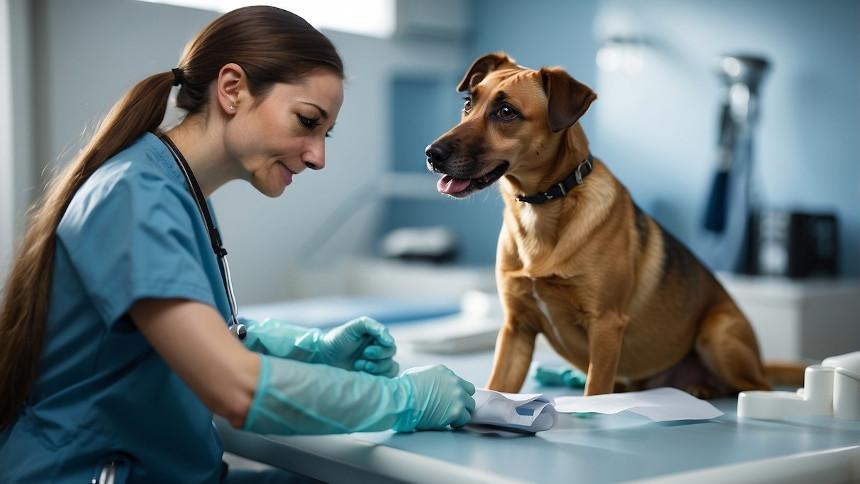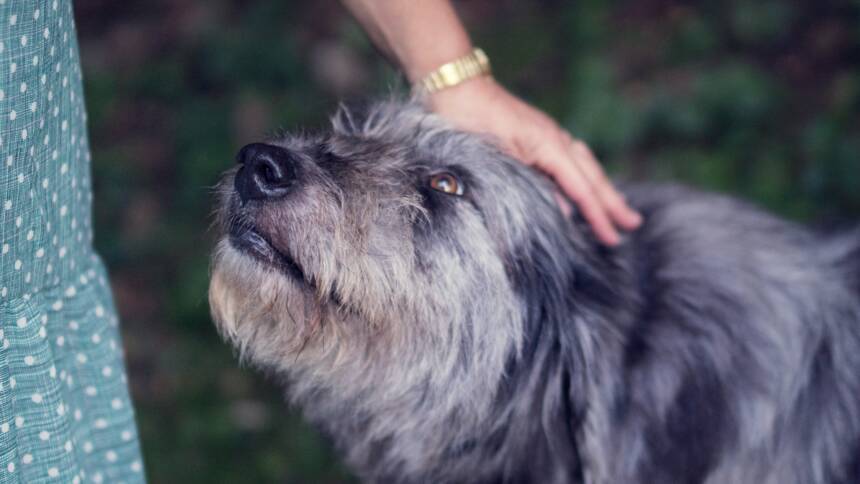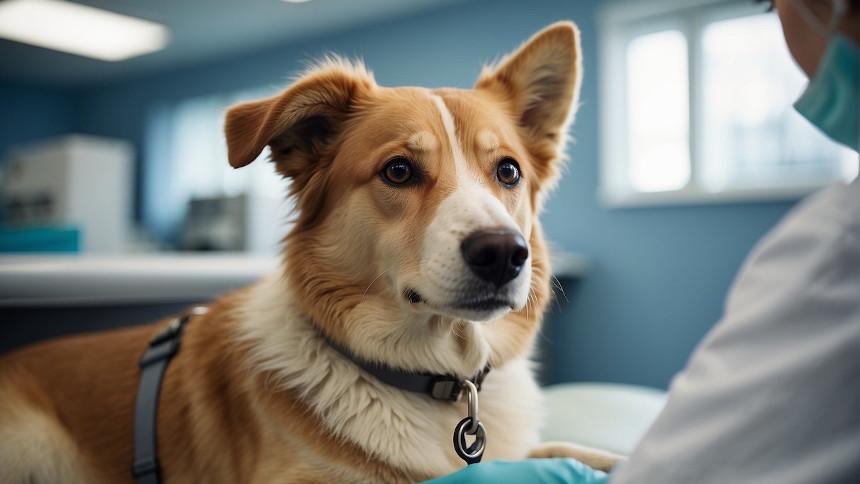Old dogs often exhibit distinct behavioral changes as they approach the end of their life. These changes can be subtle or more pronounced, depending on the individual dog and its condition. Pet owners might notice variations in their dog’s daily routines, energy levels, and overall demeanor. Recognizing these signs is crucial as it allows for a better understanding of the dog’s needs during this time and ensures that they are kept as comfortable as possible in their final days.
Physical and behavioral signs can signal that an old dog is nearing death. Among these, a noticeable decrease in appetite and weight, difficulty breathing, and a decline in mobility are common. Dogs may also display a change in temperament, showing signs of restlessness or, conversely, an unusual lack of activity. These alterations can point towards the natural decline in a dog’s bodily functions as they age and reach the twilight of their life.
Such behavioral shifts in an aging dog are often accompanied by a need for increased care and comfort. It is important for pet owners to be observant and responsive to these changes, seeking veterinary advice to manage any distressing symptoms that may arise. By doing so, owners can ensure they provide a serene and nurturing environment for their old companions as they reach the end of their journey.
Recognizing Old Age in Dogs
As dogs transition into their senior years, they undergo various physical and cognitive changes. Awareness of these changes can help owners manage their aging dogs’ needs more effectively.
Physical Changes and Health Issues
Senior dogs often exhibit physical changes as they age. Owners may notice the onset of gray hair around the muzzle and eyes. In addition, aging dogs may develop joint problems, such as stiffness and discomfort, which could be indicative of arthritis. Over time, these conditions can affect their mobility and daily activities.
Health issues also become more prevalent with old age. Dogs might experience a decline in sight and hearing, making them less responsive to visual cues and commands. Serious health problems such as cancer, liver failure, and kidney failure are also risks that increase with age. These diseases can lead to significant changes in behavior and well-being.
Moreover, dental disease is common among older dogs, sometimes leading to tooth loss or infection, which can impact their appetite and weight.
Cognitive and Behavioral Changes
Cognitive function may diminish in senior dogs, leading to what is known as cognitive dysfunction. This can manifest in various ways, such as:
- Disorientation: Dogs may appear lost or confused in familiar settings.
- Memory Loss: Previously known commands or behaviors might be forgotten.
- Altered Sleep Patterns: Owners might notice changes like more daytime sleep or restlessness at night.
Behavioral shifts may also occur; an elderly dog might seek less interaction and exhibit a decrease in social behaviors, preferring quiet and solitude over play or greetings. While some changes are normal with age, significant alterations in behavior could be signs of discomfort or illness and warrant a veterinary consultation.
Signs of Discomfort and Pain
As a dog approaches the end of life, it is essential to recognize the signs of discomfort and pain. This can help in providing the necessary care and making well-informed decisions regarding the dog’s well-being.
Changes in Mobility
Older dogs often experience a decline in mobility which indicates discomfort or underlying pain. Signs to look for include:
- Difficulty standing after lying down or hesitation to stand
- Reluctance to move, such as avoiding stairs or showing an unwillingness to go for walks
- Limping or lameness, suggesting joint pain or deterioration
- Difficulty with easing into a sitting or lying position
Signs of Pain in Behavior
Behavioral changes can also signify that a dog is in pain. Owners should be aware of:
- Loss of appetite or changed eating habits, such as lying down while eating
- Displaying signs of disorientation or confusion
- Increased vocalization; whining or groaning indicating distress
- Vomiting and diarrhea, which can be signs of systemic pain or discomfort
- Loss of muscle control, often evident in the hind legs or general body weakness
By recognizing these signs and seeking appropriate veterinary care, one can help ensure the comfort of an aging dog during their final days.
Behavioral Changes as Death Nears
As a dog reaches the final stages of its life, pet owners may notice significant changes in behavior, which can be indicative of their pet nearing death. Owners might see shifts in their dog’s social tendencies and psychological state.
Social Withdrawal and Disinterest
Dogs approaching the end of life may exhibit a notable social withdrawal from their environment and the people and other pets they once interacted with eagerly. They may no longer show interest in greeting their owners, participating in play, or engaging in activities that previously brought them joy. This loss of interest can be seen in their:
- Reduced response to familiar faces
- Lack of enthusiasm for favorite toys or activities
Increased Anxiety and Restlessness
In contrast to withdrawal, some dogs may display increased anxiety and restlessness as they near death. This can manifest as:
- Pacing or aimless wandering
- Behavioral signs of distress such as excessive panting, whining, or vocalization
- Uncharacteristic aggression or irritability when approached or handled
- Displaying repetitive behaviors that they may not have shown before
These behavioral changes, such as confusion and anxiety, can arise from declining health and should be addressed with patience and empathy to comfort the dog during its final days.
End-of-Life Care
Providing end-of-life care for a senior dog involves a compassionate approach that focuses on maintaining the quality of life and comfort. Pet owners play a crucial role in this stage, often in consultation with a veterinarian, to ensure their dog’s remaining time is as peaceful and pain-free as possible.
Comfort Measures
Comfort measures are actions taken by pet owners to alleviate pain and distress in their aging dogs. These measures can include:
- Physical Comfort: Soft bedding helps ease joint pain, and maintaining a comfortable room temperature can keep a dog at ease. Regular, gentle petting can also be soothing.
- Dietary Management: Offering favorite foods and ensuring easy access to fresh water can encourage dogs to eat and stay hydrated, but appetite changes should be monitored.
- Medical Support: Prescribed medications for pain or other specific conditions should be administered as directed by a veterinarian.
- Emotional Support: Keeping a calm environment and staying close can provide significant emotional comfort to a dog nearing the end of life.
Making Decisions About Euthanasia
Deciding on euthanasia is one of the most challenging aspects of end-of-life care for a pet owner. Key considerations include:
- Quality of Life Assessments: Regular assessments with the help of a veterinarian can guide owners on when it might be time to consider euthanasia.
- Understanding the Process: It is important for owners to understand what euthanasia involves and that it is performed with compassion to minimize suffering.
- Aftercare: Planning for the pet’s remains and remembering the pet can be part of the healing process for the owner.
Feeding and Hydration near the End
In the final stages of a dog’s life, caregivers may notice significant changes in feeding and hydration habits. Addressing these changes is crucial for maintaining comfort and quality of life.
Addressing Decreased Appetite
A dog nearing the end of life often exhibits a lack of appetite. She may refuse food entirely or show interest in only certain types of food. It’s important that caregivers:
- Offer small, frequent meals, which may be easier for the dog to manage.
- Experiment with different foods to find what the dog can and will eat.
- Consult with a veterinarian regarding appetite stimulants if deemed necessary.
Monitoring Dehydration and Weight Loss
Dehydration and weight loss are common as a dog’s appetite diminishes. Caregivers should:
- Provide constant access to fresh water and encourage the dog to drink.
- Monitor for signs of dehydration, such as dry gums and lack of skin elasticity.
- Keep track of the dog’s weight regularly to monitor any loss.
- Discuss with a vet the use of subcutaneous fluids if the dog isn’t drinking enough.
Appropriate attention to a dog’s feeding and hydration can help manage digestive issues and contribute to their comfort during this challenging time.
The Final Moments
As a dog approaches the end of its life, certain behaviors and physical signs become more evident, indicating that the time may be near. Recognizing these signs can help pet owners prepare for the inevitable and ensure that their dog’s final moments are as comfortable as possible.
Recognizing the Signs That a Dog Is Dying
- Extreme Weight Loss: A significant reduction in body weight is often observed as the dog’s body deteriorates and they may lose their appetite.
- Lethargy: Dogs in their final stages may exhibit a severe lack of energy, preferring to remain still and showing disinterest in surroundings.
- Labored Breathing: Breathing may become difficult, with noticeable changes in the pattern, such as shallow or irregular breaths.
- Loss of Consciousness: In the very last moments, a dog may lose consciousness or responsiveness to their environment and loved ones.
Observing these signs in a dog suggests that they are in the final stage of their life, and compassionate care is necessary. Assistance from a veterinarian can provide guidance on managing these symptoms and making decisions regarding end-of-life care.
Aftercare and Grieving
When a beloved pet passes away, the grief can be profound. Pet owners may experience a deep sense of loss and sadness, similar to the mourning of a human loved one. Aftercare involves decisions regarding the pet’s remains, while grieving is a personal process that varies greatly from individual to individual.
Handling Grief and Loss
After the loss of a pet, individuals often go through a series of emotional stages that can include denial, anger, bargaining, depression, and acceptance. These stages are part of the natural grieving process. One’s response to grief is deeply personal, and there is no “right” way to feel or mourn. Here are some strategies to manage the grief:
- Seek Support: Connect with friends, family, or support groups who understand the significance of the loss.
- Memorialize: Creating a memorial, such as a photo album or planting a tree, can provide a sense of solace and honor the memory of the pet.
- Express Emotions: Allow oneself to feel and express emotions, whether through crying, writing, or talking about the pet.
- Routine: Maintain a usual routine to provide structure, which can be comforting during a time of change.
- Professional Help: If grief feels overwhelming or persistent, consider seeking professional counseling or therapy.
It’s vital for individuals to allow themselves to grieve and to recognize that it’s a normal and necessary process after losing a treasured companion.
Advice for Pet Owners
When a pet owner’s dog enters its senior years, vigilance and a gentle approach can significantly affect the dog’s quality of life. Subtle changes in behavior warrant attention, and understanding what to expect can prepare owners for this final journey with their companion.
Tips on Providing Comfort
Environment: Ensure that the dog’s sleeping area is warm, cushioned, and easily accessible. Avoid moving furniture to maintain a consistent layout, which helps senior dogs with declining vision or cognitive function.
Diet and Hydration: Offer small, nutritious meals that are easy to consume. Maintaining hydration is essential, so keep fresh water available and encourage the dog to drink.
Pain Management: Consult a veterinarian for pain management strategies if the dog appears uncomfortable. Medications, supplements, or alternative therapies may ease discomfort.
Affection: Continuous physical contact and soothing words provide immense comfort to a dying dog. Their need for reassurance and love does not wane, even as their other senses diminish.
Understanding the Aging Process
Physical Changes: Dogs often experience a decline in their activity levels. Pet owners should tailor their expectations and adjust exercise routines to match the dog’s reduced capabilities.
Cognitive Health: Training may become challenging as senior dogs can display signs of cognitive decline. Patience and repetition can help maintain existing training and provide mental stimulation.
Work Routines: For working dogs, the transition to retirement should be gradual. Reducing responsibilities while still allowing them to engage in light activities can prevent depression associated with inactivity.
Activity Scheduling: Short, gentle walks may be better suited for a senior dog’s declining energy levels and joint health. However, they still benefit from the stimulation and physical activity.
Pet owners serve a critical role in ensuring their aging dogs maintain dignity and comfort as they approach the end of life. By observing, adapting, and providing for their unique needs during this time, owners can offer a serene and loving environment for their faithful companions.
When to Consult a Veterinarian
In the twilight years of a dog’s life, changes in health and behavior may signal that it’s time to seek professional advice. It is critical for pet owners to recognize when to involve a veterinarian to ensure the dog’s comfort and address any health issues.
Health Monitoring and Preventive Care
Health Issues: When a dog displays signs of health decline—such as decreased mobility, signs of confusion, incontinence, or seizures—a veterinarian should be consulted promptly. These symptoms could be indicative of various conditions, including canine cognitive dysfunction, which can affect memory and behavior.
- Decreased Mobility: Difficulty standing, walking, or performing daily activities warrants veterinary assessment.
- Poor Coordination: This can be a result of degenerative diseases or joint problems.
- Confusion and memory loss: If a dog appears disoriented, forgets familiar routines, or does not recognize familiar people, it could be suffering from cognitive dysfunction.
Behavioral Changes: Substantial changes in how a dog behaves are cause for concern. This encompasses alterations in sleep patterns, uncharacteristic aggression, or withdrawal from social interactions.
- Anxiety or Restlessness: Persistent agitation or discomfort should be evaluated.
Preventive Care: Regular veterinary visits for preventive care can detect and potentially mitigate the progression of age-related conditions.
- Routine Check-Ups: Regular examinations can help manage age-related health challenges.
In summary, pet owners should maintain ongoing communication with their veterinarian to monitor and address age-related changes in their dog’s health and behavior.








